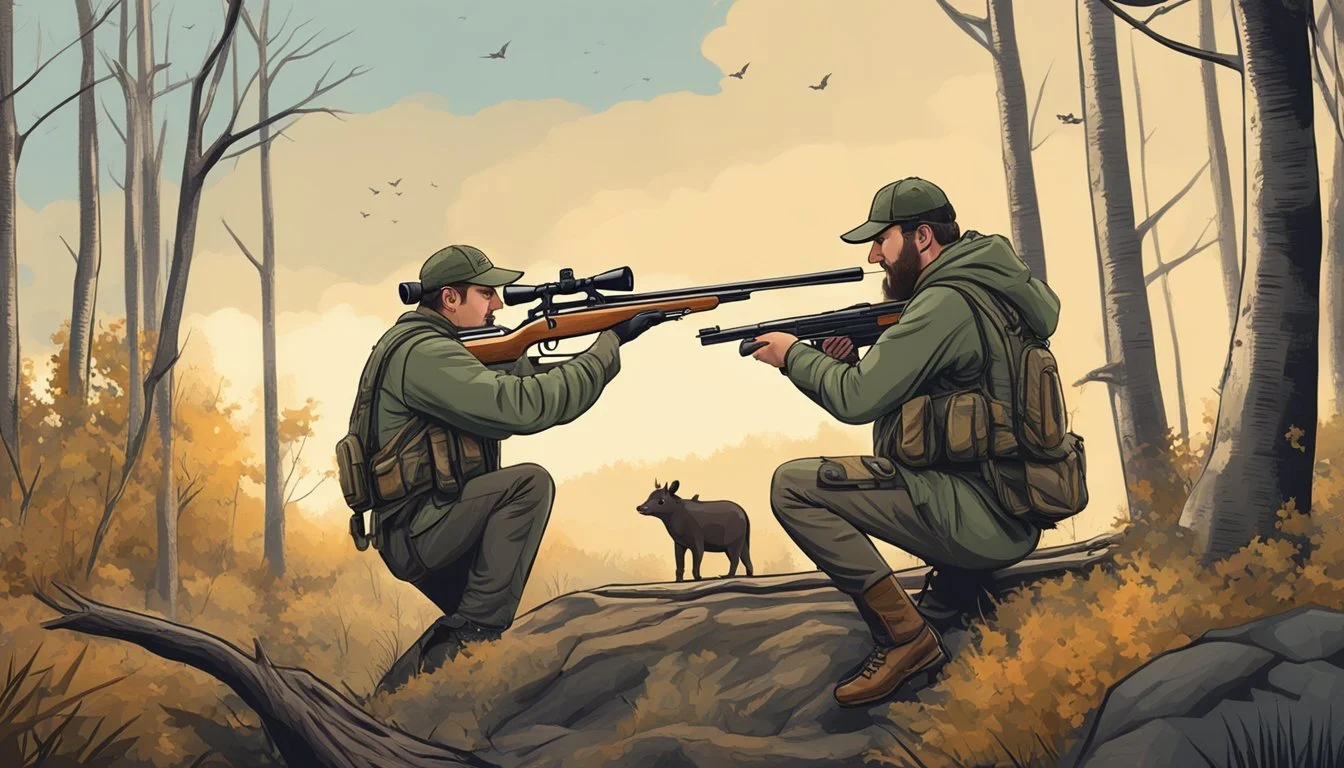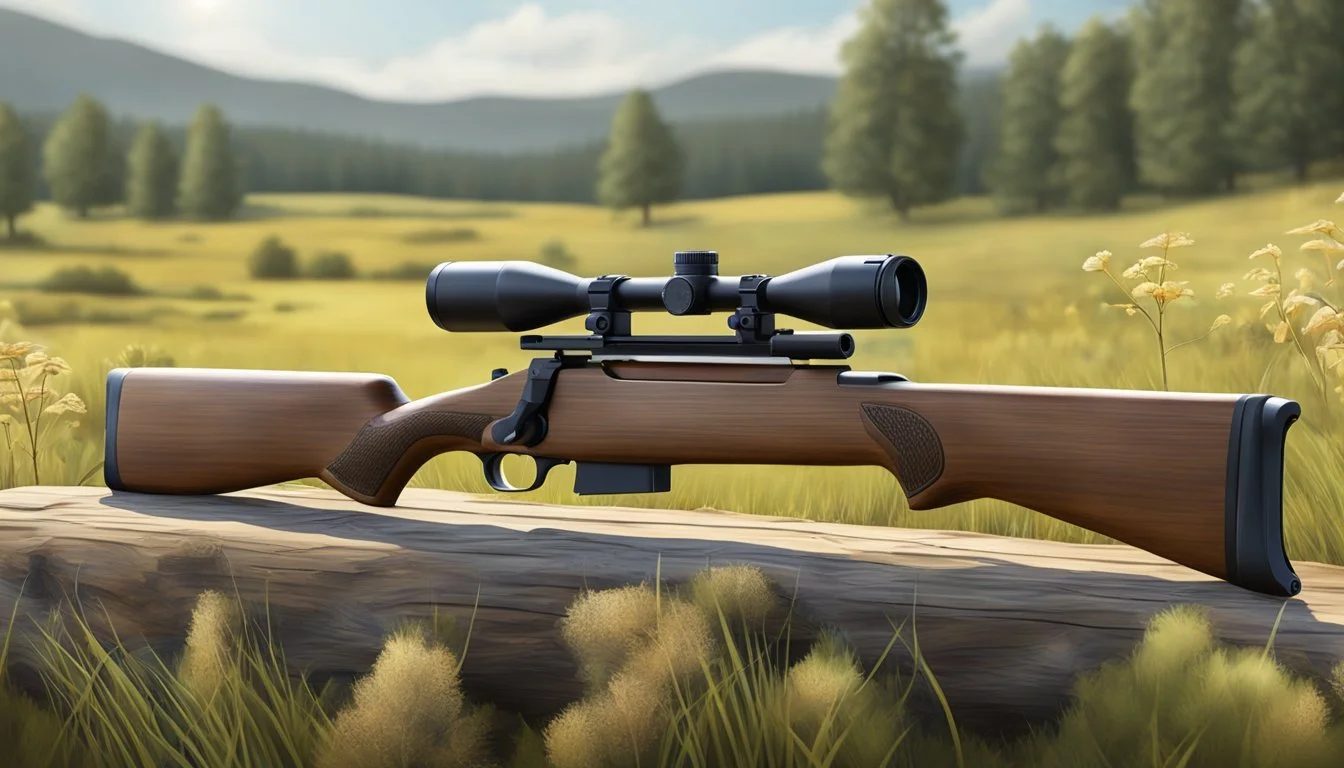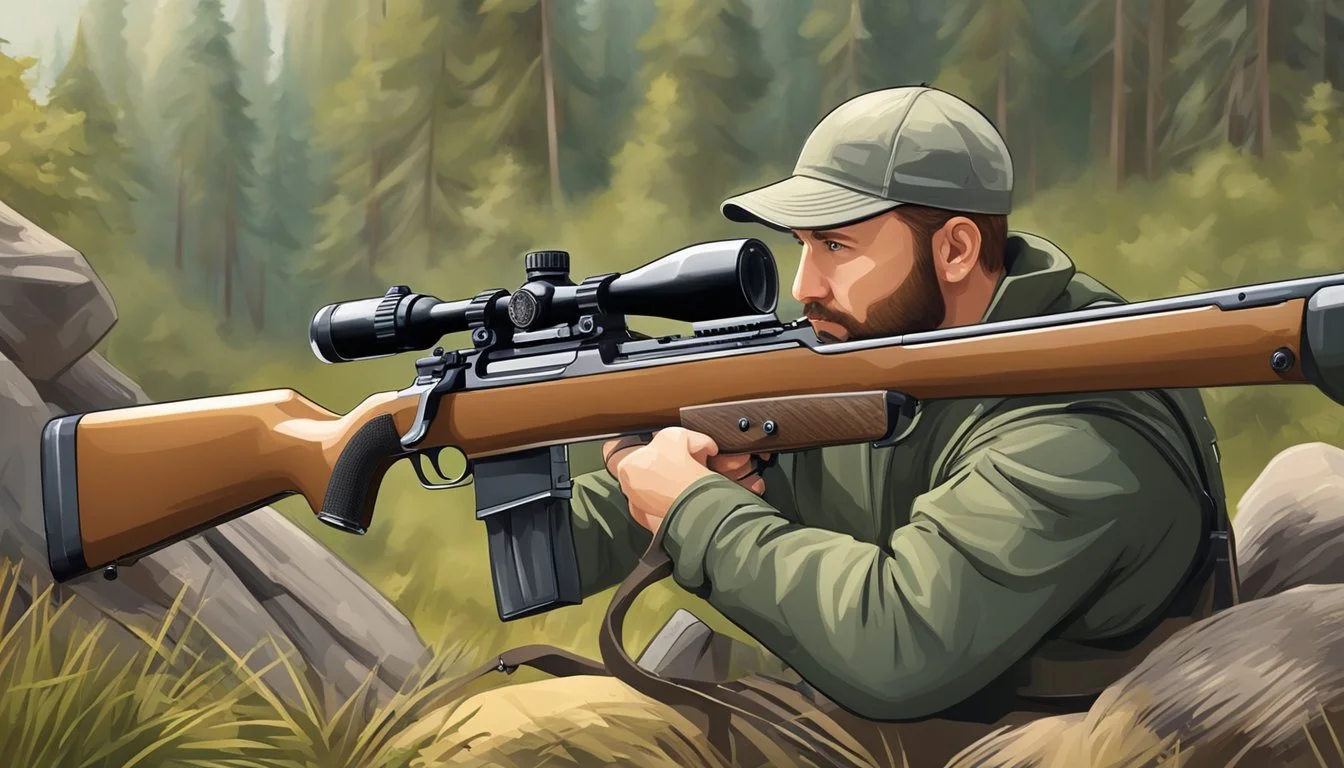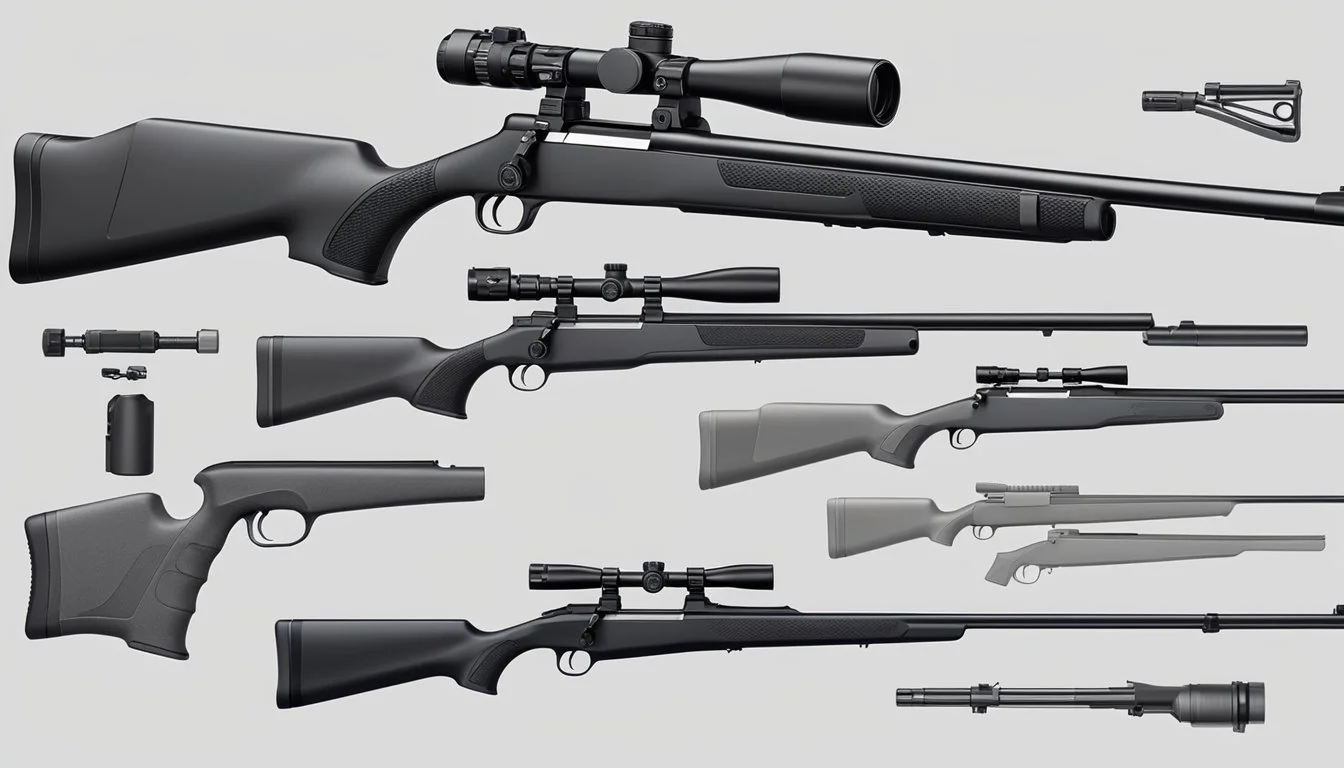Lightweight Bolt Action Rifles for Hogs
Selecting the Perfect Firearm for Hog Hunting
When pursuing the elusive and robust wild hog, the choice of rifle becomes a critical component of the hunt. Bolt action rifles, renowned for their reliability and precision, stand out as favored tools for hunters stalking these formidable animals. However, the environment often dictates the necessity of a lightweight rifle, which allows for greater maneuverability and less fatigue during long treks through tough terrain where these creatures are commonly found.
The market offers a wide variety of bolt action rifles tailored for hog hunting, varying in caliber, barrel length, ergonomic design, and overall weight. Lightweight rifles not only enhance a hunter's mobility but also deliver the ruggedness needed to withstand the harsh environments encountered during such hunts. Balancing the weight with the power required to ensure a humane and effective shot is of the utmost concern.
Advancements in materials and design have given rise to rifles that don't compromise on functionality while offering easier carry. Manufacturers have responded with a wide range of models constructed from lighter, durable materials such as carbon fiber and advanced alloys, helping to reduce the rifle's overall heft without sacrificing performance at an affordable price. From storied brands to modern innovators, the array of lightweight bolt action rifles designed to meet the specific needs of hog hunting continues to evolve, offering hunters an optimal blend of portability and power.
Benefits of Lightweight Rifles for Hog Hunting
When hunters choose lightweight rifles for pursuing hogs, they capitalize on enhanced mobility in the field and more enjoyable, lengthier hunting trips. These rifles also tend to offer better handling and accuracy due to their design and construction.
Mobility and Maneuverability
Lightweight rifles vastly improve a hunter's mobility. Easier to carry over distances and through challenging terrains, a lightweight firearm reduces fatigue. With hogs and wild boar often inhabiting dense and rugged environments, a rifle that allows for swift movement and repositioning can be the difference between success and failure. Maneuverability becomes particularly essential when tracking moving targets, where a split-second delay can result in a missed opportunity.
Extended Hunting Sessions
A lighter rifle contributes to prolonged hunting sessions and less physical strain. Extensive periods spent in the field require equipment that won't overburden the hunter. Lightweight rifles facilitate this by being less cumbersome to carry and shoulder, which can be especially advantageous for backcountry hunts where endurance is key.
Accuracy and Handling
Handling a rifle effectively influences shot placement and overall accuracy. Lightweight rifles offer better handling due to their balanced weight distribution and ease of shouldering. An accurate shot is critical when hunting hogs, as their tough hide and fast pace demand precision. Moreover, smooth handling assists in quick follow-up shots if needed, with reduced weight allowing for steadier aim and more controlled shooting.
Selecting Caliber for Hog Rifles
When choosing a caliber for lightweight bolt action rifles used in hog hunting and wild boar hunting, one must consider stopping power, range, and recoil management. Balancing these factors will ensure that hunters have a caliber capable of effectively taking down a hog, while also providing a comfortable and accurate shooting experience.
.308 Winchester: The Versatile Choice
The .308 Winchester is widely regarded as a highly versatile caliber. It offers a balance of stopping power and manageable recoil, which makes it suitable for a variety of hunters. .308 Win is capable of taking down hogs at varying distances, and its widespread popularity means that ammunition is readily available and comes in a variety of bullet weights and styles, suitable for both smaller and larger game.
6.5 Creedmoor: Precision and Low Recoil
The 6.5 Creedmoor has rapidly gained popularity due to its precision and relatively low recoil. With a flat trajectory and high ballistic coefficient, the 6.5 Creedmoor caliber provides exceptional accuracy, which is vital for placing ethical shots on hogs. Its reduced recoil compared to larger calibers is an added benefit, particularly for hunters who prefer a lighter rifle or extended shooting sessions.
.30-06 and Magnum Calibers for Larger Hogs
For larger hogs, the .30-06 provides a step up in power without the harsh recoil of magnum cartridges, although it's typically heavier to carry in the field. This caliber has a long-standing history of reliability and versatility with a variety of bullet choices to match any hunting scenario. For those facing particularly large and tough hogs, magnum calibers may be considered for their increased energy and penetration capabilities, though they come with significantly more recoil.
Understanding Rifle Components and Materials
Selecting the right components and materials is crucial to the functionality and performance of lightweight bolt action rifles used for hog hunting.
Barrel Length and Material
Barrel Length:
For hog hunting, barrel length can affect both the portability and accuracy of the rifle.
A shorter barrel is easier to maneuver in brush, whereas a longer barrel can provide increased accuracy at range.
Materials:
Stainless steel is a common choice for durability and corrosion resistance.
Carbon fiber barrels offer a significant weight reduction while still maintaining rigidity and accuracy.
Stock Options: Balancing Weight and Stability
Lightweight Stocks: Stocks made from synthetic materials or carbon fiber reduce overall weight, aiding in the mobility of the hunter.
Sturdiness: Despite the focus on weight reduction, the stock must provide a stable platform for accurate shooting.
Choosing Durable and Reliable Parts
Materials: Titanium is favored for its strength-to-weight ratio, often used in small, high-stress components.
Reliability is paramount; hunters should choose parts that are known for enduring rugged conditions without failure.
Here's a list of rifle components with their material options and associated benefits:
Barrel:
Material Options: Stainless Steel, Carbon Fiber
Benefits: Offers durability, lightweight handling, and corrosion resistance for extended use in various environments.
Stock:
Material Options: Synthetics, Carbon Fiber
Benefits: These materials reduce the overall weight of the rifle and increase maneuverability, which is crucial in dynamic hunting scenarios.
Small Parts:
Material Options: Titanium
Benefits: Titanium parts are lightweight yet extremely strong, enhancing the rifle's performance without adding unnecessary weight.
In their pursuit of the ideal lightweight bolt action rifle for hog hunting, hunters should carefully consider each component's material and design to ensure a balanced combination of lightweight portability and reliable performance in various hunting conditions.
Essential Features of Hog Rifles
Precision and efficiency in hog hunting demand rifles that combine speed with customization. Here are some essential features to look for:
Optics and Sights for Quick Target Acquisition
For hunters seeking quick and accurate shots, optics play a vital role. A quality scope with a wide field of view allows for rapid target acquisition, while iron sights may serve as reliable backups. The magnification level should match the expected shooting range, leaning towards lower magnification for faster targeting in dense terrain.
Detachable Magazines for Convenience
A detachable magazine facilitates rapid reloading, a crucial factor during hog hunting where follow-up shots might be necessary. Magazines should be robust and easy to handle, even in adverse conditions, allowing hunters to carry multiple pre-loaded options for quick exchanges in the field.
Adjustable Triggers for Personalized Performance
The trigger mechanism can greatly affect shot accuracy and comfort. An adjustable trigger permits customization of the trigger pull weight to the hunter's preference, enhancing precision. Lighter triggers enable quicker shots, but should always be balanced with safety considerations.
By focusing on these key features, hunters can select a bolt action rifle ideal for the unique challenges of hog hunting.
Ammunition Considerations for Hog Rifles
When selecting ammunition for lightweight bolt action rifles in hog hunting, hunters need to consider legality, performance, cost-effectiveness, and the physical burden of recoil. How the ammunition aligns with these aspects can significantly influence the hunting experience and success.
Choosing the Right Ammunition for Different States
Different states have varying regulations regarding allowable calibers for hog hunting. Hunters must ensure that their ammunition choice complies with local laws to avoid legal issues. For instance, while a .22 caliber might be sufficient in one state, others may require a minimum of .243 due to its more effective stopping power. Researching state regulations on the variety of calibers prior to the hunt is essential for both compliance and effectiveness.
Impact of Bullet Weight on Hog Hunts
The weight of the bullet affects both the trajectory and the stopping power—crucial elements when hunting hogs. Heavier bullets tend to have better penetration, which is vital for ensuring a clean and ethical kill. Here are the general recommendations when it comes to the variety of calibers:
Lighter bullets (100-130 grains): Suitable for smaller hogs and when minimizing recoil is a priority.
Heavier bullets (150-180 grains): Ideal for larger hogs, providing deeper penetration and more reliable performance at longer ranges.
Weight reduction in ammunition can ease the hunter's load but should not compromise on the necessary stopping power to effectively hunt hogs.
Premium vs Budget-Friendly Ammunition
Quality ammunition comes at a price, yet it can offer superior accuracy, consistency, and performance. Premium rounds often boast advanced bullet designs and cleaner-burning powders, which may prove more reliable in the field.
Premium Ammunition: Higher cost, potentially better performance. May include features like bonded bullets for maximum weight retention.
Budget-Friendly Ammunition: More cost-effective, still capable of delivering required performance if well-researched. Adequate for hunters mindful of their budget.
Ultimately, while recoil and budget considerations are genuine, they should not outweigh the importance of effective, humane kills when selecting ammunition for hog hunting.
Synthetic Stock: A Key Factor in Weight Reduction
In the quest for lightweight hunting rifles, particularly for hog hunting, the synthetic stock emerges as a pivotal component. It combines weight savings with the toughness required for the rugged conditions often faced during hunts.
Advantages of synthetic stocks in terms of weight savings
Synthetic stocks are favored in manufacturing lightweight rifles due to their significant weight reduction benefits. Typically, these stocks are made from composites like fiberglass, carbon fiber, or polymers. Such materials are not only lighter than traditional wood but also allow for the design of stocks that are slimmer and inherently lighter without sacrificing structural integrity.
Carbon fiber stocks: Offer exceptional rigidity and strength, contributing to a balanced rifle that is easier to handle over extended periods in the field.
Polymers and other composites: These materials help in slimming down profiles further, cutting unnecessary ounces, which is particularly advantageous for hunters who traverse long distances by foot.
Durability and weather resistance offered by synthetic materials
The choice of synthetic materials extends beyond just weight considerations; these stocks are built to endure. Hunters typically face diverse and often adverse weather conditions, ranging from rain and snow to high humidity—all of which can severely affect a rifle's performance if not built to withstand such elements.
Weather resistance: Synthetic stocks are impervious to moisture and temperature fluctuations, maintaining their shape and function irrespective of the environmental conditions.
Longevity and maintenance: They require far less upkeep compared to their wooden counterparts and are less prone to scratches, dents, or corrosion, ensuring a longer service life and consistent performance.
By employing synthetic stocks, rifle manufacturers have succeeded in creating rifles that are not only lightweight but also resilient and reliable for the demanding sport of hog hunting.
Enhancing Rifle Performance
Optimal rifle performance is critical for hog hunting, where accuracy and handling can make all the difference. Enhancements such as muzzle brakes and suppressors, adjustable stocks, and fluted bolts contribute significantly to a rifle's precision and shooter comfort.
Utilizing Muzzle Brakes and Suppressors
Muzzle brakes reduce recoil and muzzle rise by redirecting propellant gases, resulting in improved accuracy for follow-up shots and makes for a really accurate rifle. Suppressors, on the other hand, decrease sound and muzzle blast which not only protects the shooter’s hearing but also minimizes disturbance to the game. The addition of these devices can transform a standard bolt-action rifle into a more efficient hunting tool.
Benefits of Muzzle Brakes:
Recoil Reduction: Up to 50% decrease, enhancing shooter steadiness.
Muzzle Rise Mitigation: Maintains sight alignment for subsequent shots.
Benefits of Suppressors:
Sound Suppression: Reduces gunshot noise, essential for hunting in noise-sensitive areas.
Muzzle Blast Reduction: Lowers shooter's signature, beneficial for concealment.
Fine-Tuning with Adjustable Stocks
An adjustable stock is crucial for a tailor-fit shooting experience. It allows for adjustments in length of pull, comb height, and sometimes even butt-pad placement. This customization leads to a stable shooting platform, better control, and enhanced accuracy. Shooters can fine-tune their rifles to their specific ergonomics, ensuring comfort and precision on the field.
Adjustable Stock Features:
Length of Pull: Tailors rifle to shooter’s arm length.
Comb Height: Aligns eye with optic for optimal sighting.
The Role of Fluted Bolts and Smooth Action
A fluted bolt does more than just enhance the rifle's aesthetics; it reduces weight and can decrease drag, contributing to a smoother action. In turn, a smooth action is fundamental for quick and reliable cycling of cartridges. These features combined lead to a more responsive rifle that can be quickly manipulated in high-pressure situations without sacrificing accuracy.
Fluted Bolt Advantages:
Weight Reduction: Less material equals a lighter bolt, enhancing rifle balance.
Heat Dissipation: Flutes can aid in quicker cooling of the bolt.
Smooth Action Significance:
Cycling Efficiency: Less effort required for bolt manipulation.
Reliability: A fluid action minimizes risk of jamming.
Top Lightweight Bolt-Action Rifle Recommendations
In the pursuit of the perfect hog rifle, hunters often seek lightweight bolt-action options that offer a balance between portability and performance. The following rifles have been selected for their specific features tailored to hog hunting, from accessibility and reliability to premium ultralight designs and innovative construction.
Ruger American: Accessible and Reliable
The Ruger American rifle stands out as a go-to choice for hunters on a budget, yet it refuses to compromise on reliability. Featuring a Marksman Adjustable™ trigger, lightweight stock, and a power-bedded, free-floating barrel, it offers a precise and reliable shooting experience.
Price Point: Budget-friendly
Key Features: Adjustable trigger, power-bedded barrel
Kimber Mountain Ascent: Premium Ultralight
For hunters who prioritize agility and easy handling in the field, the Kimber Mountain Ascent is an exemplary model. It is one of the lightest production rifles available, thanks to its carbon fiber-reinforced stock and a fluted barrel. This firearm does not only offer excellent maneuverability but also maintains admirable accuracy.
Composition: Carbon fiber stock, fluted barrel
Weight Consideration: Exceptionally lightweight
Christensen Arms: Innovative Carbon Fiber Designs
Christensen Arms rifles are renowned for their innovative use of carbon fiber, particularly in the barrel design which significantly reduces overall rifle weight. Their firearms boast an impressive strength-to-weight ratio, making them a solid choice for hunters who require a good hog rifle that facilitates longer treks without sacrificing performance.
Innovation: Carbon fiber barrel for reduced weight
Benefit: High strength-to-weight ratio for extended carry
Frequently Asked Questions
When pursuing hog hunting, shooters often seek rifles that are effective, versatile, and within budget. This section aims to address common inquiries about lightweight bolt action rifles suitable for hunting hogs.
What caliber is most suitable for both deer and hog hunting?
The .308 Winchester is highly recommended for its versatility, as it is suitable for taking down both deer and hogs. Its balance of power, recoil, and availability of ammunition makes it a preferred choice among hunters.
Which lightweight bolt action rifles under $1000 are recommended for hog hunting?
Lightweight bolt action rifles like the Savage 110 Hog Hunter and Ruger American Rifle are well-regarded options that typically fall under the $1000 price point and can still be classed as an affordable rifle. They offer reliability and precision, essential for successful hog hunting.
How do I select the best hog hunting rifle caliber?
Selecting the best hog hunting rifle caliber depends on factors such as the typical range of engagement, the size of the game, and the hunter's comfort with recoil. Calibers like .308 Winchester, 6.5 Creedmoor, and .30-06 Springfield are often chosen for their effectiveness on hogs.
What are the advantages of using AR-15 for hog hunting?
AR-15 platforms offer rapid follow-up shots, large magazine capacity, customization options, and reduced recoil, which can be advantageous in fast-paced hog hunting scenarios where quick shot placement is crucial.
Should I choose a light rifle or shotgun for effective hog hunting?
The choice between a rifle or a shotgun for hog hunting is context-dependent. Rifles are better suited for longer-range shots and offer more precision, while shotguns can be more effective in dense brush or for close-range hunting.
Can you recommend a firearm for dedicated driven boar hunting?
For dedicated driven boar hunting, a fast-handling bolt action rifle such as the Franchi Momentum All-Terrain Elite chambered in .308 Winchester, which is designed for quick shots, would be a suitable choice.
Remember, there's no perfect rifle, but there is the perfect rifle for you!







